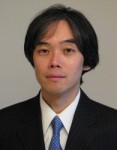THE NATURE OF THE DEMOCRATIC PARTY OF JAPAN AND THE FUTURE OF JAPANESE POLITICS

Makihara Izuru
Introduction
The media is unsparing in its view of government by the Democratic Party of Japan. The trials and errors and straying course of day-to-day administration, in particular, seem to rub reporters the wrong way, and as a result, the following is the picture painted two years after the party took power. Prime Minister Hatoyama Yukio destroyed himself by repeating inconsistent statements as demonstrated by the Futenma issue. His replacement, Kan Naoto, started out by abruptly announcing a tax-and-spend policy before suffering a major defeat in the Upper House elections, and after the earthquake disaster, he made a display of abandoning nuclear power generation, but was forced to resign after his administration lost buoyancy when the Liberal Democratic Party and the New Komeito–which hold the key to the enactment of bills in the Upper House–demanded his resignation as a condition for passing the special government bond bill, and when faced with the passage of a no-confidence motion in the Diet as a result of rebellion within his own party, he indicated that he would retire. Although focused on results, the Noda Yasuhiko Cabinet is also notably fraying at the edges. Ultimately, government by the Democratic Party of Japan has been helplessly chaotic.
That is one view, but the polar opposite is also conceivable. This is the viewpoint of how they achieved a departure from government by the Liberal Democratic Party to complete the passage of the budget and related bills through the Diet while keeping control of a situation where the government is in a minority in the Upper House. It all revolves around the compilation of the budget. Hatoyama maintained an alliance with the People’s New Party and the Social Democratic Party, showing a high degree of respect for the ideas of both parties in order to compile the first budget after coming to power and to pass related bills through the Diet, launching the relocation of Futenma outside the prefecture, and resigning after the passage of the budget through the Diet. His successor, Kan was put in the dock by a nation that was tired of the confusion under the Hatoyama Cabinet, suffering a crushing defeat in the Upper House elections, but he managed to smoothly pass the fiscal 2011 budget before the end of the fiscal year, using every possible scheme to pass major budget-related bills, including the special government bond bill, through the Diet, ultimately accomplishing passage of the bills before resigning. Now, Noda, who has risen from Minister of Finance to Prime Minister, as did Kan, is playing tag with the Ministry of Finance and pushing forward with finance reform.
The former argument uses the yardstick of systematic political management by LDP administrations prior to the Koizumi Junichi Cabinet, but even the LDP has lost its touch by now. The latter argument is too heavily weighted in favor of the Democratic Party of Japan. The truth is probably somewhere between the two. The politician-led initiatives (i.e., a structure whereby politicians exclude bureaucrats from decision-making) of the initial DPJ administration were complete failures. The confusion during that period was painful to watch. Better to have bureaucrats demonstrate a degree of initiative with politicians assimilating while implementing policies that modify the original manifesto. The Reconstruction Design Council and the civil service have cooperated on the reconstruction measures after the earthquake and are in the process of drafting near-term policy. Whatever shape this may take in the future, it is likely that the LDP and the New Komeito will participate. It is certain that all the parties and the bureaucratic organizations will enter into relationships of complex cooperation and negotiation.
The Constitutional Ideas of the DPJ and the LDP
If we look back, the Democratic Party of Japan has presented several ideas through their manifesto since the general election in 2009. Some typical examples are the child allowance, toll-free expressways, and income support programs for individual farm households. However, compared to the succession of Cabinets since the 1990s when reforms of government structures were at their peak, almost no progress has been made with institutional reform. In the decentralization of power to local governments, which was a commitment by Hatoyama, there are a few examples of reform where talks between the state and the regions have become legislation. Of course, the bills in question have been submitted to the Diet where they languish because the governing party holds a minority in the Upper House, but it is clear that as far as structural reform goes, the administration is not facing down the situation with unwavering resolve. Government by the Democratic Party of Japan has not been about institutional reform, but regime change. On this point, it is unmistakable that the age of institutional reform, which has been standard for the past twenty years, has taken some time out.
On the other hand, the essence of government structural reform under the Liberal Democratic Party was to keep the administration in power. The “top management” administrative reforms advanced by the third Hatoyama Ichiro Cabinet at a time when the Liberal Democratic Party was forming itself, the first ad hoc council on administrative reform under the Ikeda Hayato Cabinet in the 1960s, the establishment of the Environment Agency and the National Land Agency in the 1970s, the second ad hoc council on administrative reform and the provisional council for the promotion of administrative reform in the 1980s, the political reforms, government restructuring and reforms to the justice system in the 1990s are reforms of the structure of government.
Since they were the political party in power, one of the reasons there were calls for these reforms was the need for structural reform to overcome the limitations of operating the system. For the bureaucracy that supported government by the Liberal Democratic Party, they were also necessary for reasons of policy innovation, and no matter what the reform, the bureaucratic organizations promoting reform were dedicated to designing the system.
In addition, Nakasone Yasuhiro, who launched the second ad hoc council on administrative reform, corresponded with Kishi Nobusuke, who had advanced the movement to change the Constitution, announcing that he was “establishing a trajectory” on the “national stage,” and that administrative reform was an alternative means of amending the Constitution. Based on the articles of faith of Hatoyama Ichiro and Kishi Nobusuke of the Democratic Party, who were the main faction at the time the party formed, the Liberal Democratic Party made constitutional reform a policy platform for the party. On the other hand, Ikeda Hayato and Sato Eisaku, who were above all influenced by Yoshida Shigeru of the Liberal Party, were unmotivated by constitutional change. Administrative reform was a way to neutralize both of them.
Seen in this light, institutional reform under the LDP administration was a movement for the self-reform of an administration with complicated ties between the bureaucracy and the various factions within the LDP. Government restructuring by the administrative reform panel, which attempted to change “the shape of the nation,” and the subsequent reforms to the justice system were its grand sum. The Council on Economic and Fiscal Policy and the policymaking led by the Official Residence of the Prime Minister under the Koizumi Junichiro administration, which assimilated the outcome of government restructuring in full, are in this sense the end point of the movement for self-reform.
In regard to this, government by the Democratic Party of Japan has sought institutional reform related to initiatives taken by politicians since it was first inaugurated, but they have not been proactive about legislation. Rather, one might say that they have attempted radical reform on the operational side. However, there has been a gradual change to a moderate style. Although Hatoyama aimed for consistency in policy decisions by ministers, vice ministers and parliamentary officials, the focus gradually shifted to cooperation with bureaucrats under the Kan Naoto administration, and in terms of aspects of reconstruction after the earthquake disaster, the style whereby ministers tighten up important points developed by bureaucrats started to bear fruit in a manner identical to the methods of influential ministers under LDP administrations.
Why do the DPJ administrations lack enthusiasm for institutional reform? Unlike the LDP, which had constitutional change on its party platform, the “regime change” and “politician-led initiatives” that are the points of departure for the DPJ administration were first envisioned in the National Constitution of Japan. At the same time, the two houses of the Diet being controlled by different parties is also a phenomenon that falls within the scope of the current Constitution. Even though it may look like stagnation under the current administration, it is a consequence of the National Constitution of Japan. Government under the Democratic Party of Japan has returned to the “post-war” starting point of the National Constitution of Japan.
Consequently, in one sense, this stance is close to the stagnation under the “middle-of-the-road” administrations of the Katayama Tetsu and Ashida Hitoshi Cabinets, which were formed after the first general elections held under the current Constitution. On the other hand, it is also close to Miyazawa Kiichi, who abolished frank political leadership, strongly defended the current Constitution, and tried to let the system run its natural course. The “middle-of-the-road” administrations ran into a stalemate over the economy, forcing a change to the Yoshida Shigeru Cabinet which set out an austerity budget to counter deflation. The Miyazawa Cabinet could not gain support for political reform, ushering in the demise of longtime government by the Liberal Democratic Party, and an era of coalition governments with the formation of the Hosokawa Morihiro Cabinet.
To obey the spirit of the Constitution, the systematization of a political party accomplishing strong political integration is intrinsically necessary. During the occupation, it was the Yoshida Liberal Party; in the 1990s, that role was taken by in-house coalition governments mediated by the New Party Sakigake formed by Takemura Masayoshi and others. The restructuring of the Democratic Party of Japan is the path of the former. In the case of the latter path, just as Hosokawa and Takemura started out as prefectural governors, a politically powerful leader may be able to achieve the systematization of the next political administration. It is perhaps conceivable that a plunge into a period of major political restructuring occurs when there are two paths.
Politics of Verification under the Earthquake
However, there is a mountain of political issues confronting Japan. Measures to deal with the declining birthrate and the growing proportion of elderly, avoiding economic collapse, establishing the TPP and other trade policies, rebuilding U.S.-Japan relations and relations with Asia–all of the issues confronting the current administration are serious, but alongside them, the administration must also deal with the March 11 disaster.
To start with, to deal with the disaster, nonpartisan decision-making is necessary as it was when the Basic Act on Reconstruction was passed by agreement of the Democratic Party of Japan, the Liberal Democratic Party, the New Komeito and others, and this is something that does not come easily to any of the parties. But close to four months have passed since the earthquake, and for the victims, the situation has been individualized and diversified. The reconstruction policy would always be haunted by severe criticism, but an opening for a solution was found by means of government messages and spontaneous support by society including neighborhood organizations and NPOs.
However, there are conditions in these cases. This is why verification will govern politics on a grand scale in the future. With respect to after-the-fact verification of the nuclear accident at the Fukushima No. 1 power plant, the report that the government submitted to the IAEA has also been published in Japan, and newspapers have published the reports by the IAEA team. From now on, it will be possible to confirm pressing conclusions including aspects of support by various foreign countries and international organizations, the achievements and limitations of information disclosure by the government, as well as lessons for the future.
Activities to set up nuclear accident investigations and verification committees began at the critical juncture of three months after the disaster. This may have clearly shown the deficiencies in the government response, but conversely, it also pointed to the deficiencies in the nuclear power policies of former LDP administrations.
The special characteristics of these verifications are that once a report is published, there will be demand for publication of the results of verification in the future as well. The content of minutes and reports will be carefully scrutinized, and new policy issues will emerge, from the restructuring of the nuclear regulatory body to the restructuring of the power supply system. There will be multiple layers of verification.
The constant verification of the nuclear issue will probably extend to the whole process of reconstruction, which is pressured for diverse and complicated solutions. After the disaster, Kan relied on a method of abruptly announcing new policies such as the stoppage of the Hamaoka nuclear power plant. He was not able to speak convincingly about the future or to give proper explanations of the situation in response to the verification of the accident reported by one media investigation after another. This is not the way to win the confidence of the nation. This is the reason he was forced to announce his resignation. From now on, only an administration that is able to withstand the cycle of verifications will be able to survive. On the basis of further verification, the nation will be paying close attention to what kinds of political messages are sent out.
Future of the Noda Cabinet
Next, there is the outcome of relations between parties in and out of office. Firstly, in the Noda Cabinet, one can discern a system of collective leadership by several senior party members due to the leadership of the prime minister. Second, in order to control the minority parties in the Upper House, it is necessary to build some kind of cooperative relationship with the LDP and the New Komeito. Since a grand coalition would be a great gamble for both parties, they will probably explore the format of a partial coalition. Third, the critical juncture for the administration is, of course, the budget compilation. Whether the budget compilation for the next fiscal year will be at an impasse and plunge into dissolution, or whether the decision procedures for a draft budget for the next fiscal year are to some degree going according to plan, and the Lower House will be dissolved during deliberations or after the formation of the budget for fiscal 2013. It would seem that there are two critical junctures.
On the other hand, as a party in opposition, the Liberal Democratic Party continues to influence policy decisions as much as possible, and is probably waiting for the opportunity for a showdown with the government to force a dissolution. With respect to the latter, there are many reports in the newspapers on the LDP “regaining power.” But, “regaining” is not easy. In any case, at least since the Abe Shinzo Cabinet, there has been considerable confusion in the handling of the government. If a dissolution and general election gains momentum, the nation will without fail ask the LDP how they kept this confusion in check. Moreover, with the nuclear issue being the classical example, the responsibility for policies during past LDP eras is now emerging. Unlike the DPJ, the LDP has almost no experience of finalizing feasible campaign pledges in order to seek political power while in political opposition. How will they hammer out a future under a new LDP administration and under what campaign pledges? The Liberal Democratic Party being in opposition is a step toward making a fresh start as a genuine government party for a new age.
As of the post-Kan administration, the Democratic Party of Japan has the opportunity to embed a DPJ style of politics, making further changes to the past manifesto to continue government by the Democratic Party of Japan for as long as possible. For the LDP, this is the final preparatory phase for showing the nation their ability to govern. Naturally, both parties are in great confusion, and it is possible that they will only foment further distrust in politics. However, if both parties enter the rivalry between political parties, “regime change” will at long last not be the monopoly of the 2009 Democratic Party of Japan, but will also be the biggest political aim for the Liberal Democratic Party in the next general election. For the DPJ, “regime change” means to continue, whereas for the LDP it means the defeat of government by the Democratic Party of Japan. Will Japanese politics be able to evolve and build on the “regime change” of 2009?
Note: This article was originally appeared in “Jihyo 2011 (column on current events),” Chuo Koron, Augus, Septeber and Octobet 2011. The author has rewritten this article for use in Japan Echo Web, under permission from Chuo Koron Shinsha.


